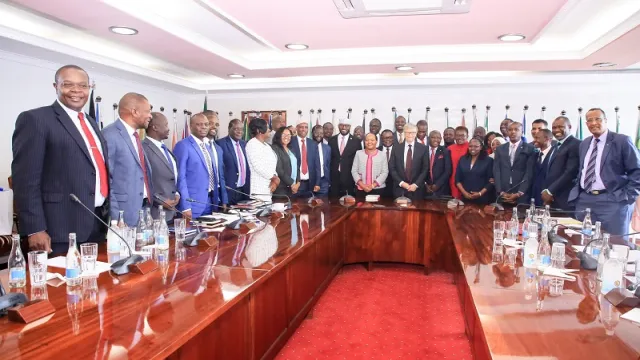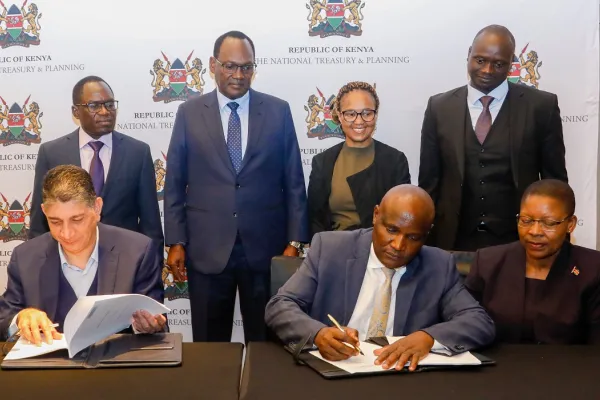How governors can rationalize growth and service delivery in their counties

How governors can rationalize growth and service delivery in their counties
The recently concluded 2022 General Election resulted in 11 governors being reelected and eight governors who served in the first term coming back while 28 new Governors are coming into office for the first time. The latter represents approximately 60 percent of all counties.
Governors being the Chief executive officers of the counties oversee the executive arm of the county governments as per Article 179 (4) of the constitution.
The governance tone set by the Governors causes a multiplier effect–for better or worse. There were significant improvements in the establishment of county governments in the immediate last term. However, several operational challenges continue to bedevil county operations and thus the ability to meet expectations. To surmount these, Governors will at a minimum have to devise strategies around critical areas in their leadership.
The first is the County Integrated Development Plans (CIDPs).The County Governments Act, of 2012 requires county governments to develop plans including: Five-year CIDPs which include a ten-year programme-based county sectoral plan, county spatial plans and cities and urban areas plans.
The integrated development planning process should be a broad consultative process that incorporates the relevant departments as well as skilled professionals who bring in an independent view.
The basic principles that should guide the planning process are that the plans must descend directly from the county’s overall vision, must leverage off the strengths and unique capabilities of the county with the end game being focusing on comparative advantage, must be realistic considering internal constraints and external factors and should be set with the participation of those who are going to be on the line to make it happen.
While developing the plans is the easy part, the day-to-day and month-to-month decisions required to manage a county are hard. It is therefore important that counties have in place performance monitoring systems to ensure progressive assessment of the implementation of the plans. Governors have their work cut out in ensuring tactical excellence in the implementation of the plans by being Specific, Methodical and Consistent.
The second critical area is pending bills.The incoming county leadership has invariably inherited outstanding bills from their predecessors.
Read also: Access and availability of fertilizers in Africa: Difference between plenty and starvation
Continuing county governors are also faced with outstanding bills from their immediate prior terms. The significant proportion (up to 90% as per the Office of the Controller of Budget (OCOB) of the outstanding bills relate to development-related expenditure and thus need to fast-track settlement to pave way for legacy projects of the new regimes. The overarching need in respect of all pending bills will be to first ensure they are genuine and represent value for money realized.
The Inter-governmental Budget and Economic Council (IBEC) had instructed counties to come up with Eligible Pending Bills Resolution Committees to verify and prioritize the payment of eligible pending bills. Further, a review and prioritization of stalled projects will have to be undertaken to ensure funds are channeled to the most strategic projects.
Counties can consider ways of acquiring syndicated government-guaranteed loans to clear pending bills and prevent further accumulation as well as increasing the generation of their own source revenue which will reduce dependency on exchequer releases and thus raise the ability to pay bills as and when they fall due.
There is also a need to train the relevant County staff on accounts payable management which will ensure the accuracy and completeness of unpaid bills in the future. County Governors will need to set the tone at the top of the agenda of pending bills to ensure that pending bills are dealt with conclusively.
Thirdly and of more importance are human resources and personnel matters.Public Finance Management Regulations, 2015 sets a limit of the county government’s expenditure on wages and benefits at 35 percent of the county’s total revenue.
However, as per reports from the OCOB for the nine-month period of FY 2021/22, county governments spent Kes139.57 billion on personnel emoluments, which accounted for 54.3 percent of the total reported expenditure of Kes257.18. The personnel costs continue to exceed the budget ceilings, stifling the budget available for development activities.
This could be attributed mostly to more than the required staff complement resulting in idle capacity. To excel, counties will undoubtedly need to attract and retain the best talent.
As a result, a critical assessment of the staff complement will be necessary to weed out any idle capacity and/or ensure the right deployment of talent with an efficient and service-oriented organizational structure.
It will also be necessary for the new county’s leadership to carry out staff verification and assessment to rule out any instances of non-existent staff and to ensure that the counties have the required skills and competencies to deliver their service delivery mandate to the citizenry.
Additionally, the use of online payroll systems is key in ensuring leakages witnessed through payment of fictitious staff are sealed.
Developing a winning formula for counties is a delicate balance that calls for professionalism and integrity; and strict compliance with laws and regulations.
More importantly, Governors play the critical role of piecing the entire puzzle together by setting the correct tone and inspiring people to action by giving them a sense of purpose or belonging that has little to do with any incentives to be gained. For inspired people, the motivation to act is deeply personal.
Opinion Authors: CPA Francis Nzau, FCCA – Associate Director at PwC; CPA Titus Rotich – Senior Manager at PwC; and CPA Moenga Elvis – Assistant Manager at PwC



